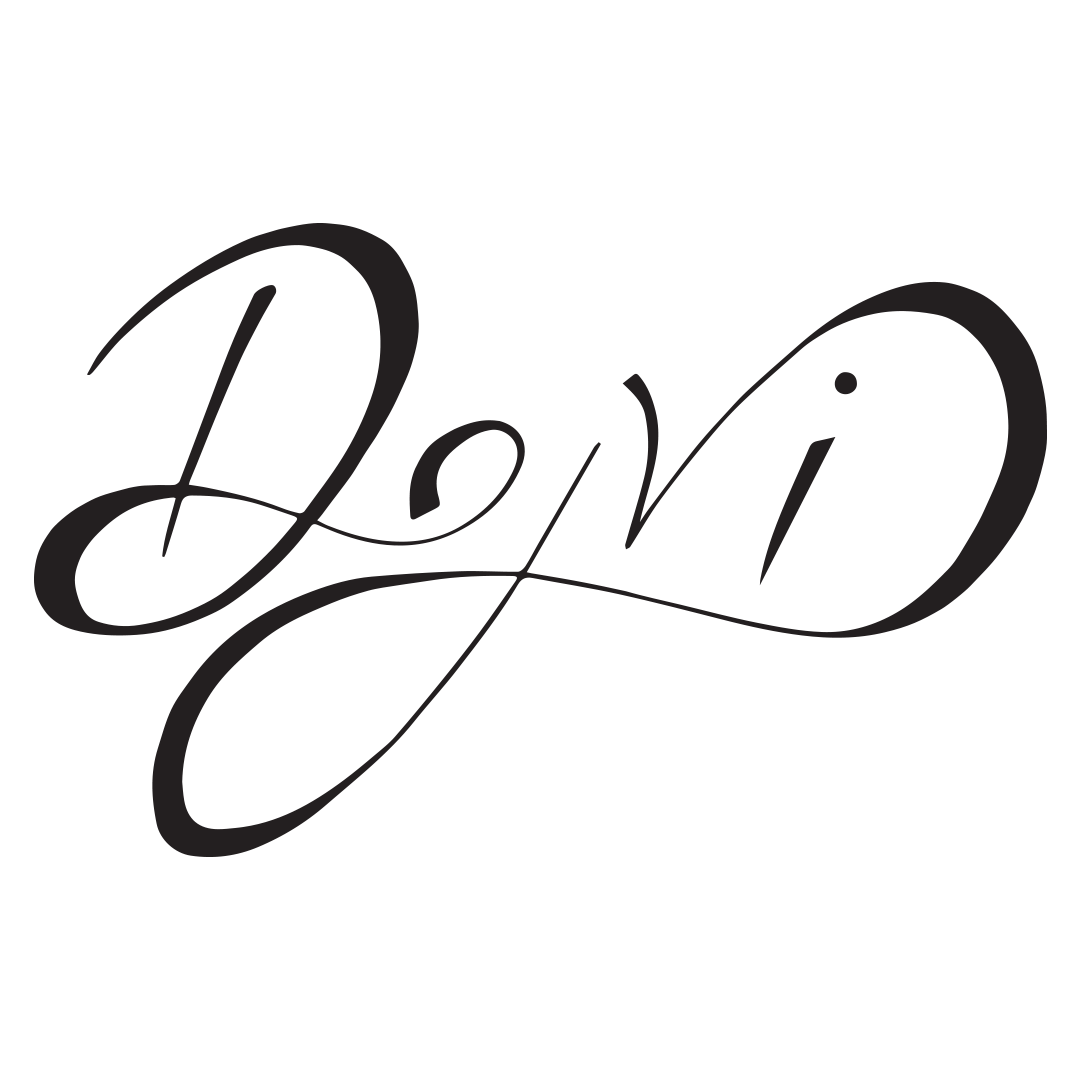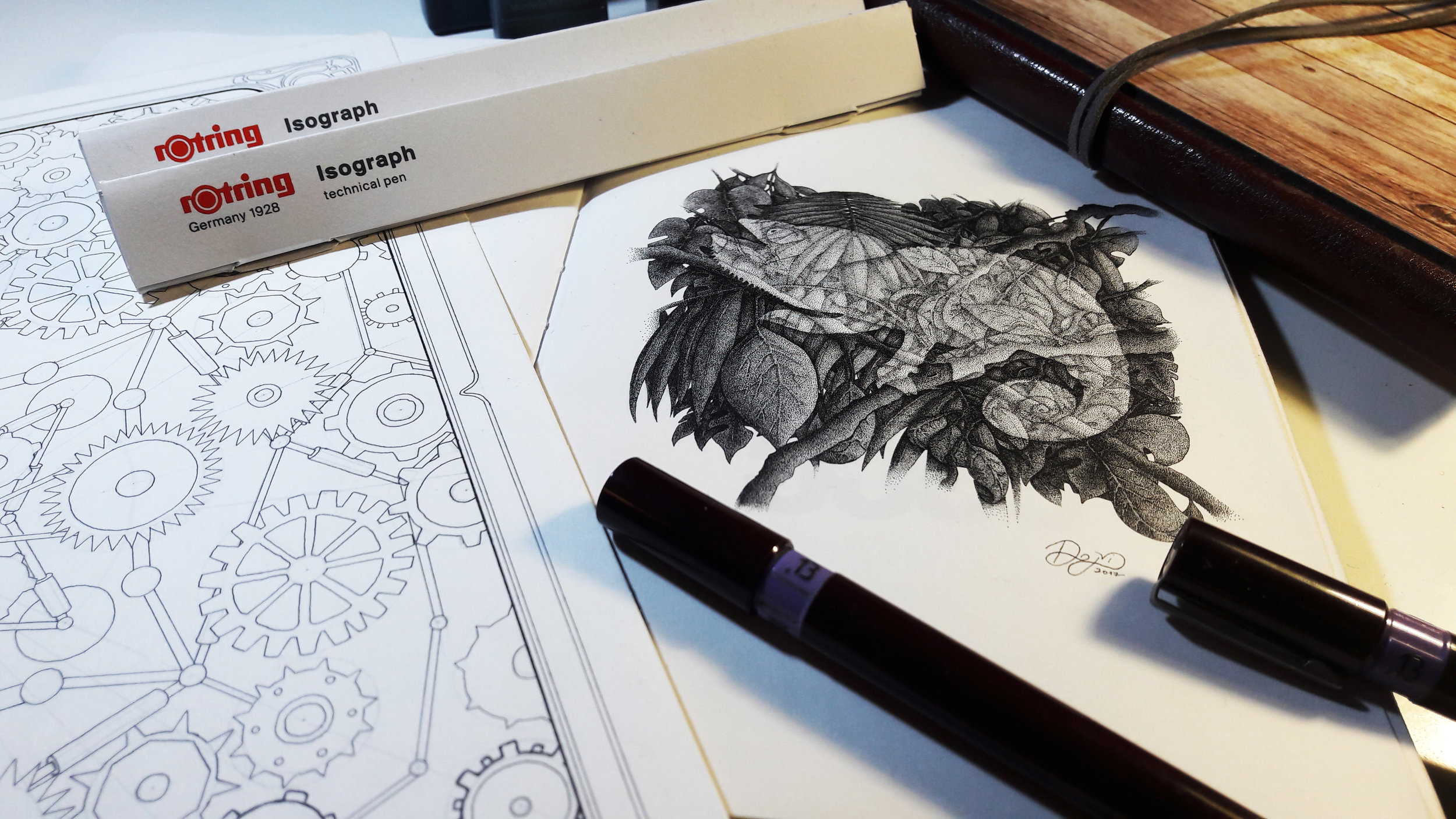No, seriously... Why draw in dots?
The short answer to that is an urge to inflict endless amounts of self-harm. That's not entirely true but pointillism (or in the case of ink/monochrome illustrations it's called stippling) is probably the most tedious of the art techniques. It requiers a huge amount of patience, precision, discipline, self-restraint, a breathing-technique, a zen state-of-mind, an ability for your spirit to leave your body, a mechanical hand, eyes which never blink and stillness of the mind, body and soul achieved through some kind of spiritual enlightnment. Okay maybe not all of those, but it's definitely tedious and time-consuming... so why use dots?
To start with I'm a huge fan of ink illustrations. The contrast and strength which ink drawings possess, the culture and philosphy they represent appeal to me a lot, so from the very start I gravitated towards this style. But bringing ink illustrations into life with realism (another style which appeals to me) quickly becomes a difficult task. What I mean by that in particular is shading.
One of the most common ways of shading with ink is line shading. More lines, (either more frequent or overlapping) the darker the area. But I never found a way to suit this style to what I wanted to do, it always turned out too messy or too dark or too cartoony. What I wanted was a photorealistic effect achieved with ink, no matter how abstract the subject matter. I always strived that the shading looked realistic.
So stippling offered itself perfectly. But,... it was incredibly difficult. When I finished my first stippled piece back in 2013, I swore never to do it again. It was insane, I lost my mind a few times while doing it, the time it took was enormous, the effort was tremendous, it just seemed way too slow and too mundane. Not to mention I still couldn't shade correctly, I was still too unexperienced so it turned out unsatisfactory.
But I gave it another try. And after that one more chance. Now I can't stop doing it.
The results feel the most rewarding. What was once a tedious process has become a sort of meditation where my mind relaxes and goes into a state of peaceful resolution. During stippling I think about countless things but in a way where they never weigh me down but rather just flow through the mindscape like a movie. I've come to a point where my hand just does what it's supposed to, one part of my brain is aware of it and is guiding it and another part of the brain is dealing with everything else.
For that reason I've started listening to a lot of podcasts, documentaries and audiobooks because I've noticed that, during the stippling process, my mind absorbs way more information than usual and with greater ease. It's almost as if my brain lets its' guard down and is just open to any information given to it. So instead of feeding it with mindless entertainment I decided it would probably be more fruitful to give it something potentially useful.
Essentially, I use stippling for two reasons:
1.) best results, in my opinion
2.) a relaxation, almost a meditation
There's not a lot that can beat the feeling of pride you have when you finish a 40, 50, 60 hour project which, in the end, you really like. Accordingly, there is no worse feeling than putting 40, 50 or 60 hours into something which, in the end, feels like an enormous waste of time and effort.
I treat stippling as both work and quality time. I've mixed the neccesary with the pleasant. It's now a way of life, rather than a burden on it. A pleasant, fulfilling experience which always ends up with something to show for it.


